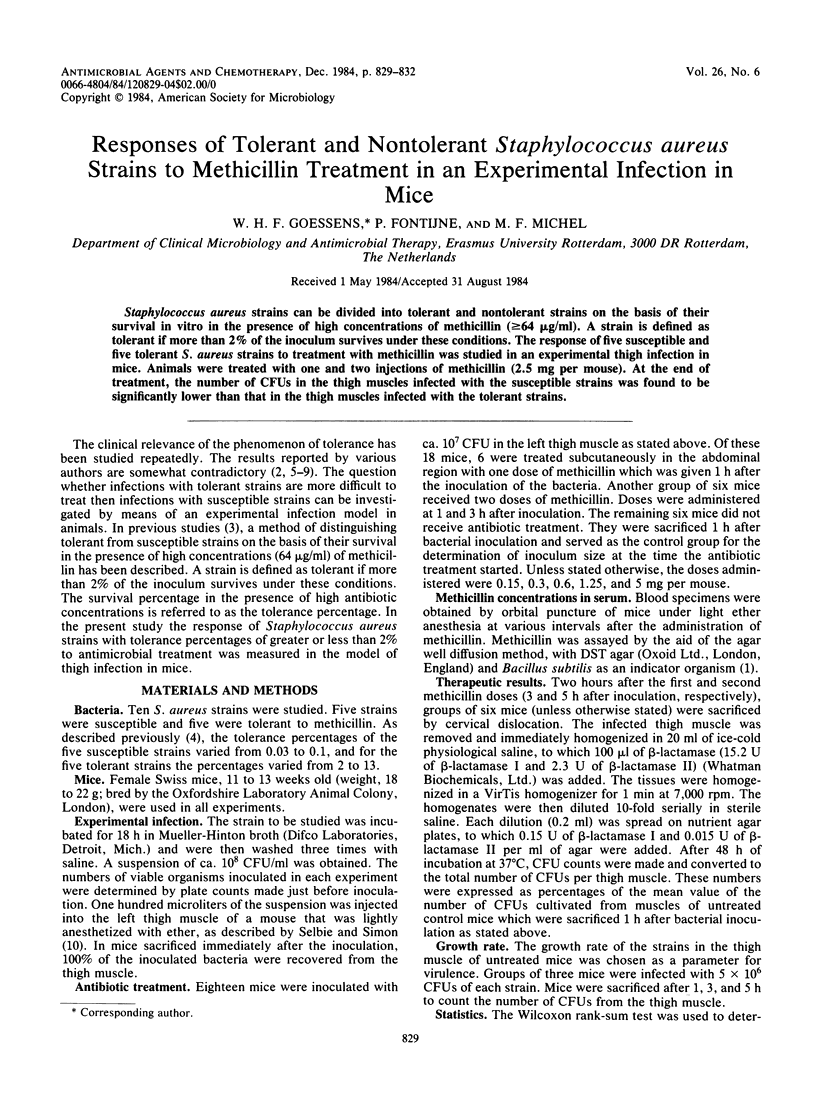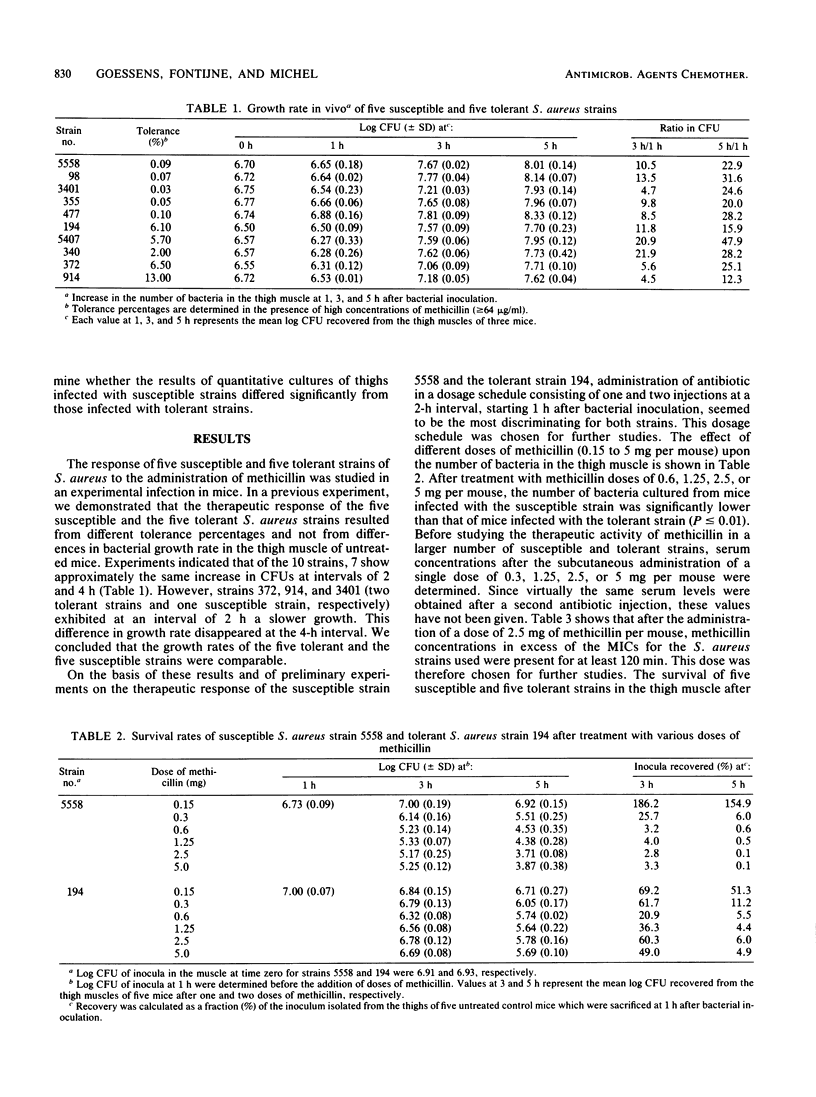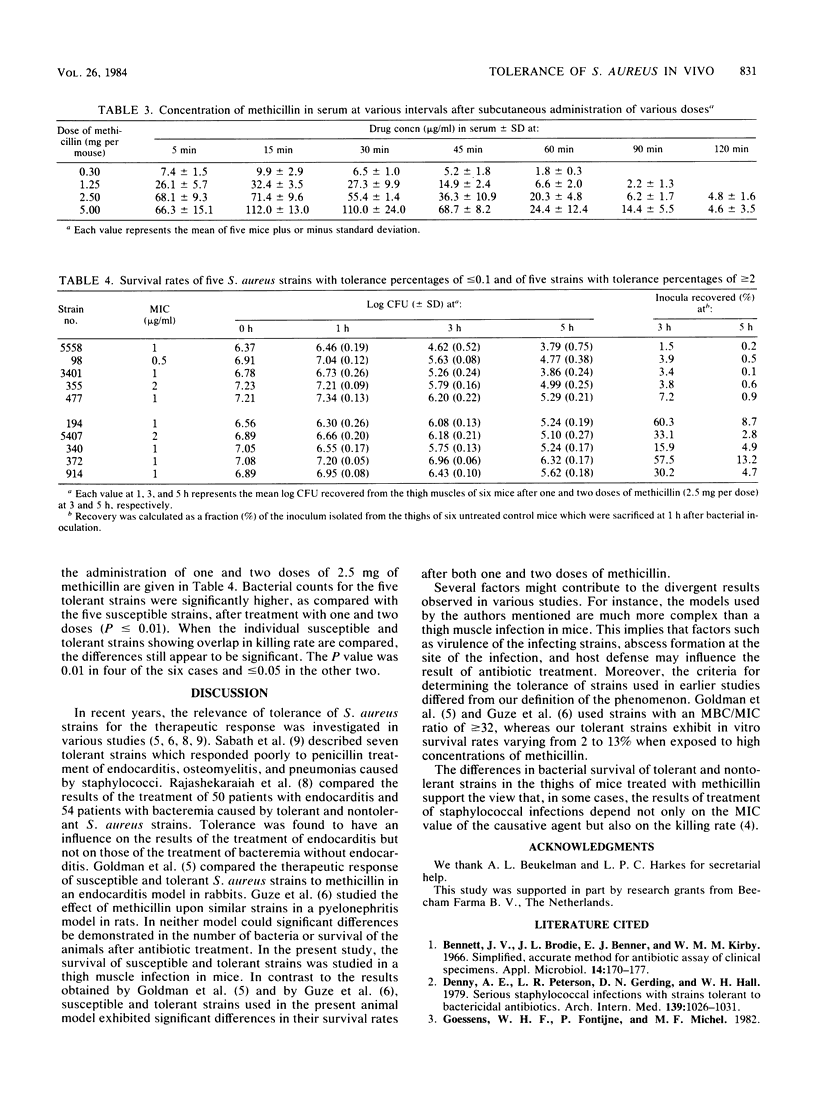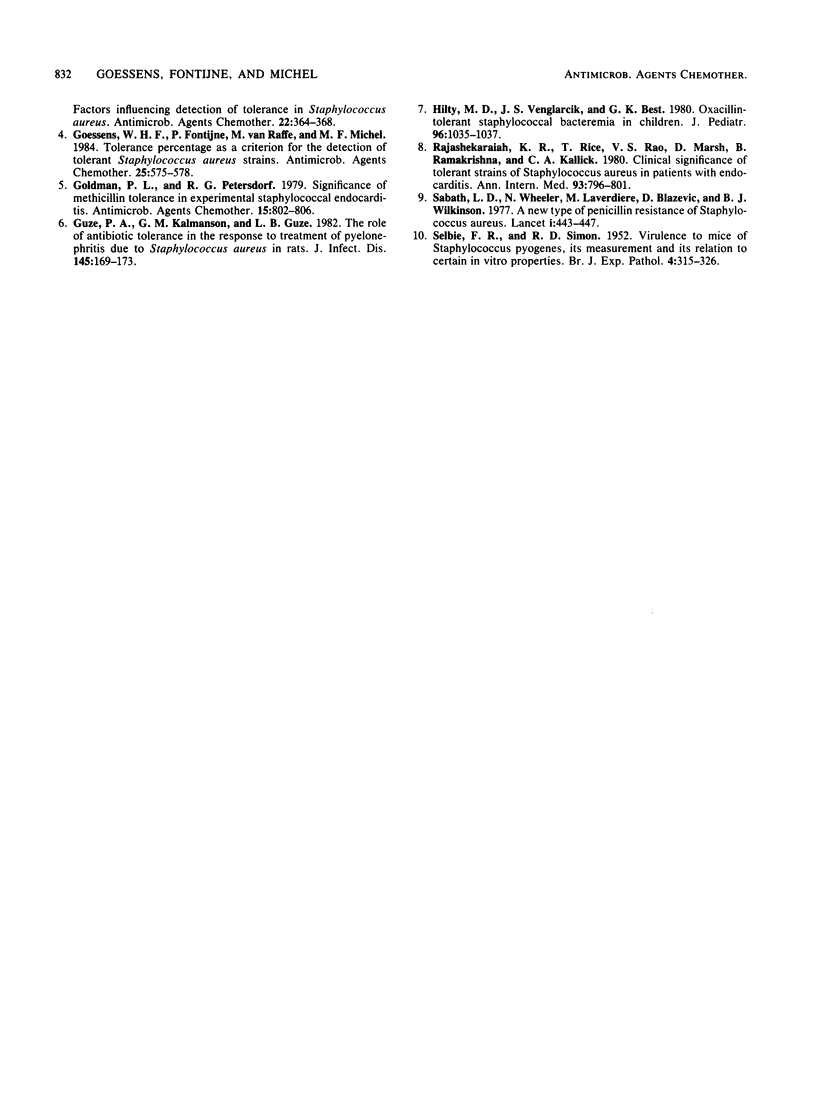Abstract
Staphylococcus aureus strains can be divided into tolerant and nontolerant strains on the basis of their survival in vitro in the presence of high concentrations of methicillin (greater than or equal to 64 micrograms/ml). A strain is defined as tolerant if more than 2% of the inoculum survives under these conditions. The response of five susceptible and five tolerant S. aureus strains to treatment with methicillin was studied in an experimental thigh infection in mice. Animals were treated with one and two injections of methicillin (2.5 mg per mouse). At the end of treatment, the number of CFUs in the thigh muscles infected with the susceptible strains was found to be significantly lower than that in the thigh muscles infected with the tolerant
Full text
PDF



Selected References
These references are in PubMed. This may not be the complete list of references from this article.
- Bennett J. V., Brodie J. L., Benner E. J., Kirby W. M. Simplified, accurate method for antibiotic assay of clinical specimens. Appl Microbiol. 1966 Mar;14(2):170–177. doi: 10.1128/am.14.2.170-177.1966. [DOI] [PMC free article] [PubMed] [Google Scholar]
- Denny A. E., Peterson L. R., Gerding D. N., Hall W. H. Serious staphylococcal infections with strains tolerant to bactericidal antibiotics. Arch Intern Med. 1979 Sep;139(9):1026–1031. [PubMed] [Google Scholar]
- Goessens W. H., Fontijne P., van Raffe M., Michel M. F. Tolerance percentage as a criterion for the detection of tolerant Staphylococcus aureus strains. Antimicrob Agents Chemother. 1984 May;25(5):575–578. doi: 10.1128/aac.25.5.575. [DOI] [PMC free article] [PubMed] [Google Scholar]
- Goldman P. L., Petersdorf R. G. Significance of methicillin tolerance in experimental staphylococcal endocarditis. Antimicrob Agents Chemother. 1979 Jun;15(6):802–806. doi: 10.1128/aac.15.6.802. [DOI] [PMC free article] [PubMed] [Google Scholar]
- Guze P. A., Kalmanson G. M., Guze L. B. The role of antibiotic tolerance in the response to treatment of pyelonephritis due to Staphylococcus aureus in rats. J Infect Dis. 1982 Feb;145(2):169–173. doi: 10.1093/infdis/145.2.169. [DOI] [PubMed] [Google Scholar]
- Hilty M. D., Venglarcik J. S., Best G. K. Oxacillin-tolerant staphylococcal bacteremia in children. J Pediatr. 1980 Jun;96(6):1035–1037. doi: 10.1016/s0022-3476(80)80633-0. [DOI] [PubMed] [Google Scholar]
- Rajashekaraiah K. R., Rice T., Rao V. S., Marsh D., Ramakrishna B., Kallick C. A. Clinical significance of tolerant strains of Staphylococcus aureus in patients with endocarditis. Ann Intern Med. 1980 Dec;93(6):796–801. doi: 10.7326/0003-4819-93-6-796. [DOI] [PubMed] [Google Scholar]
- SELBIE F. R., SIMON R. D. Virulence to mice of Staphylococcus pyogenes: its measurement and its relation to certain in vitro properties. Br J Exp Pathol. 1952 Aug;33(4):315–326. [PMC free article] [PubMed] [Google Scholar]
- Sabath L. D., Wheeler N., Laverdiere M., Blazevic D., Wilkinson B. J. A new type of penicillin resistance of Staphylococcus aureus. Lancet. 1977 Feb 26;1(8009):443–447. doi: 10.1016/s0140-6736(77)91941-9. [DOI] [PubMed] [Google Scholar]


